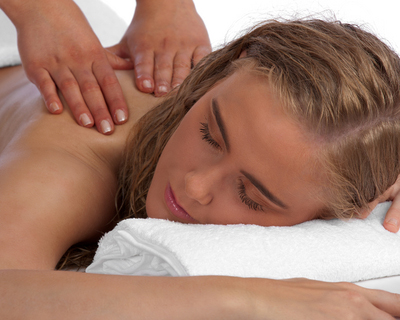We all LOVE a massage, and as dancers, boy do we get sore muscles! But when and why should we enjoy a massage? Dance Informa spoke with Stefan Karlsson, ex-professional dancer, massage therapist and Trigger Point specialist from BodyWise Physiotherapy in Perth. Stefan danced with the Cullberg Ballet, Tanz Forum, WA Ballet, Sydney Dance Company, Chrissie Parrot Dance Company and Australian Dance Theatre in his long successful dance career before applying his body awareness and understanding into the field of massage therapy.
How does massage improve our health?
A massage improves your health by assisting in the elimination of toxins like lactic acid and it improves circulation to tissues within the body including the skin. It can elongate tight muscles, keeping joints ‘less stressed’ from being compressed by tight/short muscles (like those surrounding the knee for example). A major benefit of massage is that it decreases the pain we feel in our muscles after training, rehearsals and performance through the dispersal of the lactic acid. A good masseur will also give specific stretches to target problem areas. Massage will increase the range of movement through your joints, speed up the recovery after hard training and increase energy flow.
Does massage help our immune systems?
Massage helps the immune system as it increases the number of white blood cells in the body. Research in Florida showed an increase in neutrophils (the most common type of white blood cells) after massage. We know that white blood cells protect the body by eating bacteria, for example, so yes, massage boosts the immune system!
It also helps the release of emotions and stimulates inner organs through nerve stimulation, as in Chinese acupuncture. Some masseurs use a similar system called Trigger Point Therapy, and some, like myself, use a combination to suit the individual body.
Can massage help in injury prevention?
Massage is considered to help prevent injuries by assisting the body to stay supple, de-stressed and in better shape. As there is less tension in highly used muscle groups they react better to the ‘stress’ of dancing.
Can massage speed up injury recovery?
Massage is often associated with injury recovery, depending on the type of injury. Always seek advice from a physiotherapist first who can check whether there are hairline fractures or spinal alignment problems, a severe inflammation or contusion – bleeding after an injury to the muscle.
The physiotherapist often recommends massage as treatment in recovery from injuries which produce swelling in muscles and joints. But it is important to have a good understanding of the injury before applying massage, because a deep massage to a freshly injured muscle will only increase the problem and damage the muscle fibre further.
Sometimes a dancer may use their ‘turn out’ muscles to such a degree that it prevents them from being able to ‘turn in’, limiting the range of motion in the hip. Recommended stretches and massage to correct the one sidedness of the training can help. (Always think of doing the opposite moves from the normal class movements. And please always stretch after training/rehearsal or performance as it will help prevent soreness the next day and keep your muscles supple).
When should dancers get a massage?
A dancer’s body is highly tuned and sensitive, and a deep massage with strong release techniques can make our body parts sore for a day, until we reap the benefits. It can also give us the feeling of being in a different alignment or ‘place’, so that lifting our leg up or doing a turn could feel completely different than before – we might feel ‘out of sorts’ or ‘out of tune’ so to speak. If that is the type of massage you need, please make sure you get one just before a rest day, but not on a performance day or even a day before as it can ‘throw’ you. However, shorter massages on local areas such as the calves or thighs, if you are getting cramps or lactic acid build up, are beneficial right there and then even during rehearsal/ performance.
There are special techniques I use with fellow dancers to gain quick recovery during a performance. There are stretches specifically designed for the dancer’s body, and other methods of targeting lactic acid build up which can be extremely helpful when applied at right moment.
How often should a full time dancer have a massage?
I would seriously recommend a dancer to have a decent massage at least once a month, if not every fortnight, depending on your schedule. A good massage once a month, before a rest day, will keep you free from problems building up over time.
 About BodyWise
About BodyWise
Bodywise practitioners work as a team to help their clients. They have a Pilates studio with highly qualified practitioners for one-on-one sessions and assessments. This is an essential tool in the prevention and recovery of injury, and boosts your ability to perform, whether it is in dance, golf, gymnastics, running, tennis or playing water polo. They have world champion gymnasts, professional dancers, tennis players, golfers and school sport achievers who want to perform better attending Bodywise for support in their endeavors to achieve their full potential. It is a winning combination of specialists.
www.bodywise.net.au
Photo: © Cemark | Dreamstime.com


















Pingback: Dance massage | Sektorx